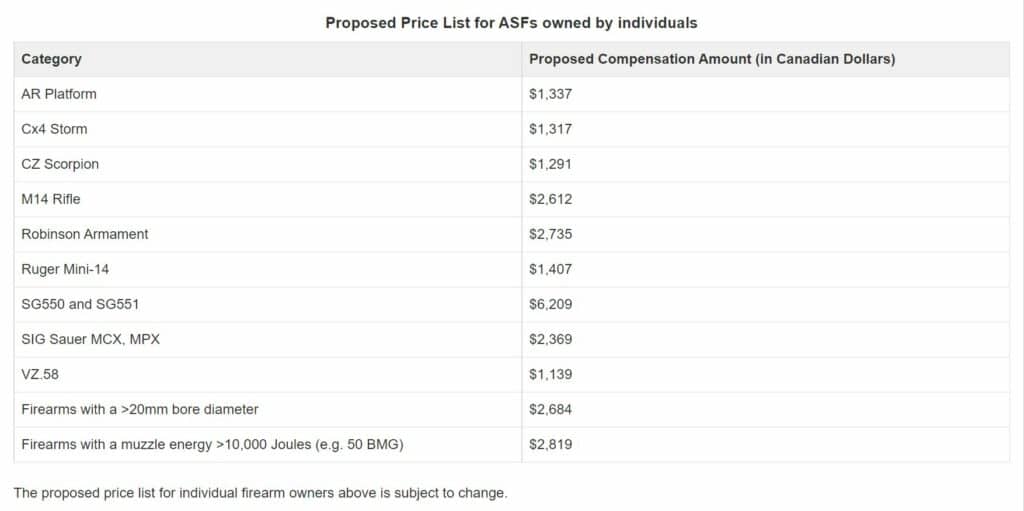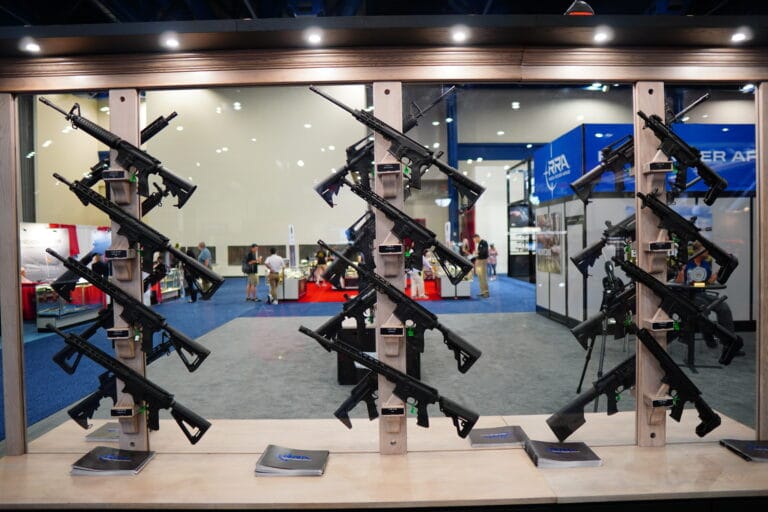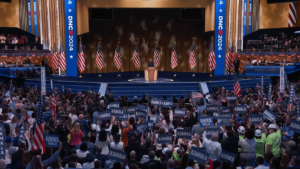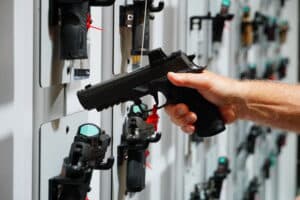Canada is looking to outsource the job of confiscating guns from tens of thousands of Canadians.
Public Safety Canada issued a Request For Information (RFI) last month gauging interest among companies willing to support the Government’s forthcoming “assault weapon” mandatory buyback. The agency, which is responsible for implementing Prime Minister Justin Trudeau’s confiscation order, said it needs help carrying out the task.
“The primary intent of this program is to safely buy back these newly prohibited firearms (NPFs) from society, while offering fair compensation to businesses and lawful owners impacted by the prohibition,” the RFI reads. “As such, [Public Safety] is seeking support from industry on a number of key elements of the program.”
The “key elements” of the program for which the Government is seeking private sector support include “Collection and Transportation, Tracking, Storage Solutions, Package Inspection, Destruction, and Post-Destruction Recycling.”
The RFI provides insight into how the Canadian Government may conduct the confiscation order made back in May 2020. The RFI suggests that it is considering having private companies do most of the work surrounding confiscating and destroying the newly prohibited firearms rather than government officials. It also marks the latest instance of Canadian officials relying on private sector support in planning the confiscation program. The Government previously contracted with IBM Canada Ltd. to help design and implement a workable confiscation scheme, resulting in a bloated budget and scant details of a concrete plan.
Canadian officials told The Reload the RFI’s were merely a matter of exercising “due dilligence.”
“The Government of Canada is investigating capacities and capabilities, both within the government and the private sector, to deliver the buyback program in the most efficient and safe manner,” Magali Deussing, a spokesperson for Public Safety Canada, told The Reload. “More information on the buyback program will be provided to Canadians in the coming months.”
Rod Giltaca, executive director of the Canadian Coalition for Firearms Rights, told The Reload that the current party in power’s reliance on the private sector to work out the buyback’s logistics is a sign that it is unworkable.
“The Liberals’ repeated appeals to the private sector are in response to the reality that no government agency is equipped to perform their confiscation scheme,” he said. “I think a few have told them so. This leaves them holding an empty bag of promises made over two years ago.”
Setbacks in developing a concrete plan have already resulted in Canadian officials extending the amnesty period for affected gun owners from April 2022 to October 2023. In the meantime, most gun owners in possession newly prohibited firearms have not turned in their weapons.
New details were revealed last month when Public Safety Canada released a proposed price list for recently banned guns to be purchased by make and model. Proposed prices range from $1,139 for a VZ-58 rifle to $6,209 for an SG550 and SG551.

“Put simply, assault-style firearms, like the AR-15, do not belong in Canada,” Marco Mendicino, Minister of Public Safety, said of the price list in a press release. “By design, their purpose is to kill as many people as possible, which is why our Government took the bold step of banning them from our country, once and for all. [The] proposed price list represents another step towards getting these dangerous firearms out of Canadian communities while ensuring current firearms owners are compensated fairly.”
Giltaca told The Reload the timing of the released price list seems interesting, considering other details of the buyback have yet to be formalized.
“It’s our understanding there are various roadblocks that are causing the government to fail in this regard,” he said. “But yet, they roll out a price list detailing what they’re willing to pay for confiscated firearms. It certainly seems to us that this list serves the same purpose as the confiscation scheme itself, to make it look like the Government is doing something when in fact they are actually doing nothing.”
American gun-rights advocates, watching with particular interest from down south, have noted how poorly the confiscation effort appears to be going.
“So far, not much of the proposed scheme looks functional, even on paper,” the National Rifle Association wrote on its website this week.
The NRA said the RFI appeared to be an attempt to offload responsibility for implementing the confiscation scheme to private contractors and questioned why Trudeau’s Government is “seeking to erase themselves as much as possible” from the work of rounding up the firearms it banned.
“A cynical guess is that Trudeau, who famously propounds a ‘sunny ways’ mantra of governing, is anxious to put maximum daylight between himself and the toxic, defining moment of his gun ban and mandatory confiscation scheme, the shameful point when thousands of farmers, hunters, sports shooters, veterans and other responsible Canadians are compelled to surrender their property for immediate destruction,” the NRA said.
The Canadian firearms industry meanwhile decried the proposed price list as being insufficiently low to capture the fair market value of the banned rifles.
“The proposed valuations are insulting,” the Canadian Sporting Arms & Ammunition Association, an industry trade group, said in a statement. “Licensed firearm owners are being offered a pittance of compensation. What level of compliance is expected from the populace when they are to receive a fraction of what they spent their after-tax dollars on?”
Giltaca agreed and criticized the list for failing to account for the range of possible values for an entire class of firearms.
“The list talks about a family of firearms being worth the same amount of money,” he said. “So, an AR-15 that retails for $2,800, will net the owner the same as an AR rifle that retails at $750. It will be $1,337 for everyone.”
The buyback scheme stems from Prime Minister Justin Trudeau’s regulation banning the sale and possession of 1,500 “assault weapons” by make and model. It was enacted in response to a high-profile mass shooting in Nova Scotia where a gunman used illegally-obtained weapons to murder 22 people.
The Government estimates that approximately 72,000 gun owners and 105,000 firearms are affected by the policy.
Public Services and Procurement Canada, the department that issued the RFIs, declined a request for comment.
UPDATE 8-05-2022 3:40 PM EASTERN: This piece has been updated to include comments from Public Safety Canada.






